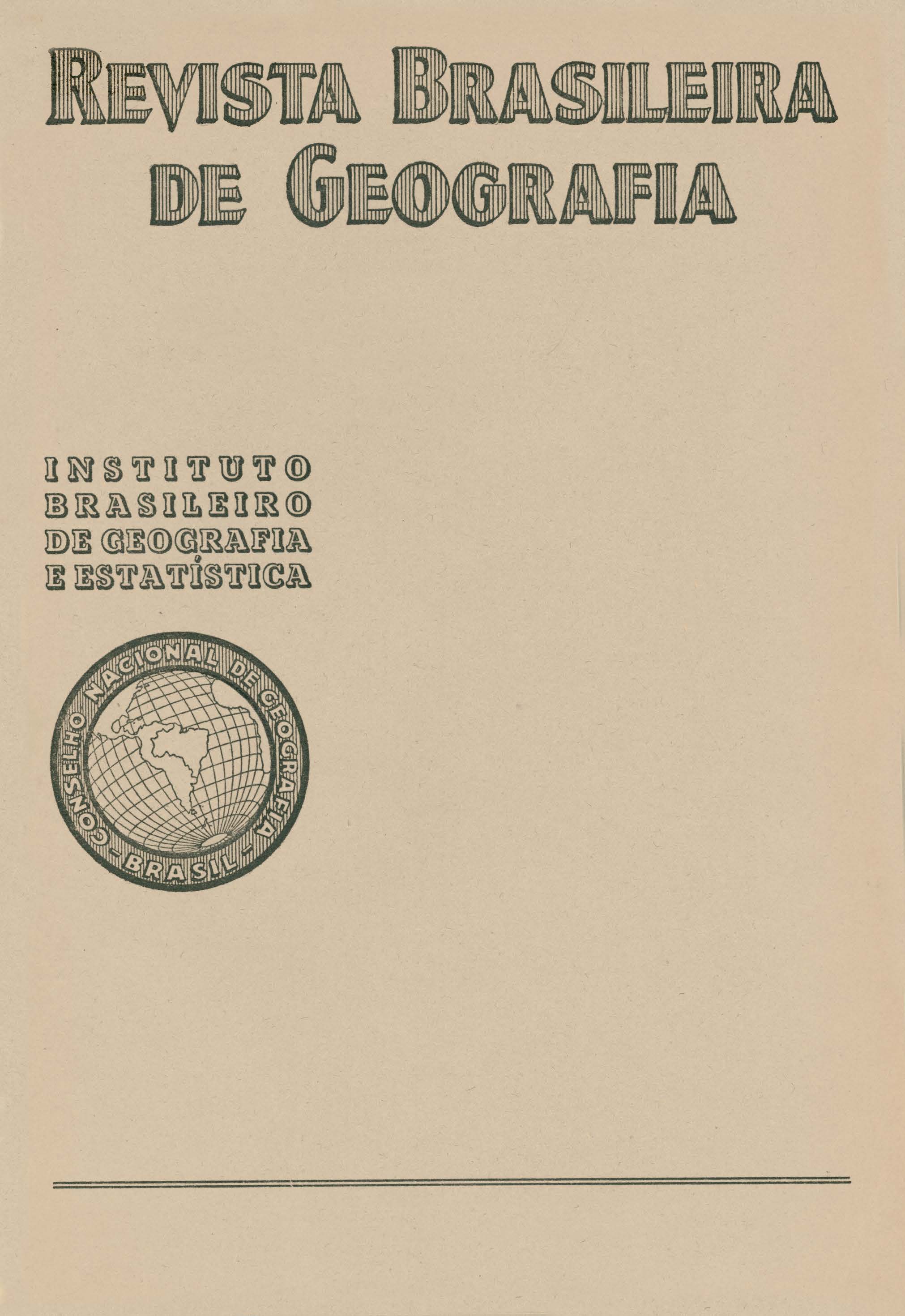Algumas contribuições geológicas dos estudos de solos realizados no Estado de São Paulo
Keywords:
São Paulo;, Ciência do Solo;, Geologia.Abstract
The author presents a contribution to the geological knowledge of the northwestern region of the State of São Paulo given by the Soil Survey of the State. Not taking into account the Triassic eruptives the topography of the area is very gentle affording few outcrops.
Two maps are presented, one published by Washburne, 1929, and another representing the results of the authors research. The Caiuá formation has been ignored for it is considered to be constituted either of Botucatu sandstone deposited after the last basalt flow (Rhaetic) or of Bauru sandstone without calcareous cement (Cretaceous). For the former the A. proposes the name "Upper Botucatu Sandstone"", as well as "Intermediate Botucatu" for the sandstones inter-bedded between lava flows and "Lower Botucatu" for the sandstone underlying the first lava flow.
Two faces are distinguished for the Bauru formation : a sandstone with calcareous cement (fluvio-lacustrine) and a sandstone with argillacious cement (terrigouns) almost calcium free. In table I are listed about 50 physical and chemical characteristics of soil produced by the decomposition o f calciferous (soil group N°16) and non-calciferous (soil group N°15) Bauru sandstones. The chemical differences between these two soils are so great that they may be used on analysis of the soil to distinguish the two faces. Table N°2 lists the analytical results of the study of typical soils produced from pure Botucatu sandstone influenced by basaltic lavas whose soils are known as "terras roxas de campo" (soil group N9 12). Soil N°15, other than characteristics given in Table 1, also contains magnetite and ilmenite as remnants of the basaltic lava. Soil N°11 is exclusively quartzose. The aver age characteristics o f these groups of soils (N°11 to N°16) derived from analyses of about 200 typical soil profiles taken as deep as 1.5 to 3.5 meters.
Data are given regarding the decomposition of basaltic lavas by concentric exfoliation. The analyses of various layers of decomposed lavas, of their respective soils and of the fresh rock, indicate the existence of a point in the progress of decomposition at which the content of silica is reduced to zero. The humus at the surface of the soil provides stability (protective colloid) for a certain amount of Si02 this being on the order of 10% in virgin "terra roxa". This amount diminishes rapidly as the amount of humus decreases in deeper soils. Beginning with the layer of exfoliation, free of red coloration, the amount of SiO2. begins to increase reaching 49% to 50% in the fresh rock. With the increase of SiO2 ferrous iron increases and ferric iron decreases. The nature of the climate causing this type of decomposition is determined quantitatively. The nature of the clays contained in the soils subjected to study are summarized as: kaolinitic in group 11, kaolinitic and hydrargillitic in group 12, hydrargillite in group 15, and bearing bentonites in group 16. The clays also have montmorillonite when sandstones possessing cineritic elements are present, this question however bears much study pending sufficient data.
A diagram of the triangular projection SiO, - Al20, - Fe,o. used by Vageler was applied to the mineral colloidal complex of the soils discussed, and as result it was found that they fall within definite regions of the projection. A straight line departing from the corner (Fig. 5a) SiO. and crossing the center of these regions to the opposite base (0% SiO) represent the progress of lateralization of the soils of the area in relation to the position of the mother rock. The greater the amount of silica in the mother rock the closer that' area is to 100% Si02 corner (in the case of sandstones, the amount of SiO, of its clays must be considered). The region o f virgin soil is situated well below the original rock on the line defined above. The area of old soil appears close at the base of the triangle. During the decay of soils their mineral complex point moves downward along the mentioned straight line.
The closer to the base of the triangle, used by Vageler, the greater the difficulty for the plants in that area to obtain raw materials from the soil, and for men to restore that soil through fertilizing. The distance the point moved downward along the straight line shows also the degree of lateralization and senility of the soil.
Preceding mapping was made taking into account features of soils which were not analyzed. Present concept is based on complete physical and chemical analysis of soils, thus throwing new light on such question as distinguishing of geological formations and their mapping.
Due to differential resistance of Bauru sandstone with and without calcareous cement, the former occurs on the highest points and the· latter on the slopes. Both are due to cretaceous reworking (in sub-humid climate) of the thaetic São Bento series(eolic sandstone inter-bedded by basaltic lava flows, in arid climate).
Calcareous cement of fluvio-lacustrine Bauru sandstone derived from decomposition of augites and plagioclases of Triassic lavas, and perhaps also from the permian Passa-Dois series (limestones, ·cherts and shales) and algonkian São Roque series (metamorphic limestones, phyllites, micaschists and quartzites), which region could also be reached by the cretaceous reworking of preceding formations.
All preceding geological maps dealing with the northwestern part of the State of São Paulo are discussed. The maps published after 1929 Washburne’s map generally did not improve the geological understanding of the region, because while some incorrect points of view have been corrected, some new errors have been introduced due to lack of systematic exploration and sufficient amount of analyses (paleontologic material was only found in the cretaceous sandstone with calcareous cement).






